-
 Bitcoin
Bitcoin $105,734.0170
-1.51% -
 Ethereum
Ethereum $2,414.7328
-3.26% -
 Tether USDt
Tether USDt $1.0002
0.00% -
 XRP
XRP $2.1748
-2.62% -
 BNB
BNB $647.5663
-1.72% -
 Solana
Solana $148.1710
-3.81% -
 USDC
USDC $0.9999
-0.01% -
 TRON
TRON $0.2799
-0.02% -
 Dogecoin
Dogecoin $0.1586
-4.17% -
 Cardano
Cardano $0.5440
-5.03% -
 Hyperliquid
Hyperliquid $37.0680
-6.59% -
 Bitcoin Cash
Bitcoin Cash $501.2052
-4.01% -
 Sui
Sui $2.6846
-3.47% -
 Chainlink
Chainlink $12.8488
-3.38% -
 UNUS SED LEO
UNUS SED LEO $8.9480
-1.51% -
 Avalanche
Avalanche $17.2059
-3.87% -
 Stellar
Stellar $0.2270
-4.75% -
 Toncoin
Toncoin $2.7889
-3.93% -
 Shiba Inu
Shiba Inu $0.0...01126
-1.76% -
 Litecoin
Litecoin $83.6893
-3.36% -
 Hedera
Hedera $0.1445
-4.49% -
 Monero
Monero $312.4014
-2.58% -
 Dai
Dai $1.0000
0.00% -
 Ethena USDe
Ethena USDe $1.0001
-0.01% -
 Polkadot
Polkadot $3.2920
-3.32% -
 Bitget Token
Bitget Token $4.4629
-1.81% -
 Uniswap
Uniswap $6.5386
-8.42% -
 Aave
Aave $260.3780
-6.01% -
 Pepe
Pepe $0.0...09308
-4.54% -
 Pi
Pi $0.4864
-3.04%
What is a phishing scam and how to avoid it with MetaMask?
Stay vigilant: Always verify URLs, never share your MetaMask recovery phrase, and use trusted security tools to avoid phishing scams.
Jul 02, 2025 at 03:35 am
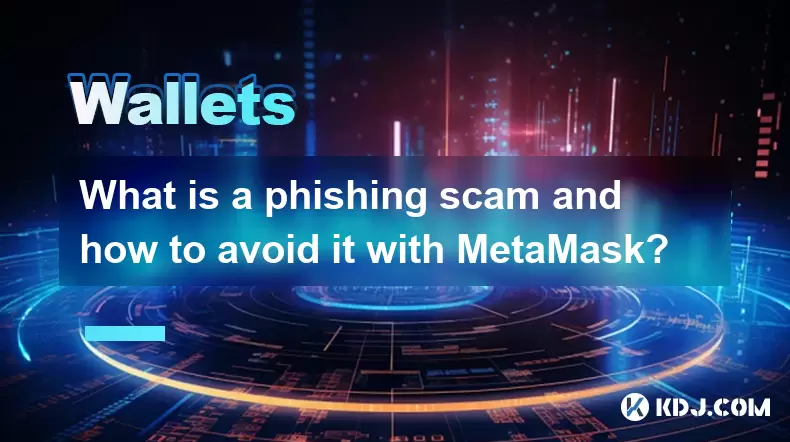
Understanding Phishing Scams in the Cryptocurrency Space
A phishing scam is a type of cyberattack where malicious actors attempt to deceive users into revealing sensitive information, such as private keys, passwords, or recovery phrases. In the context of cryptocurrency, these scams often mimic legitimate platforms, wallets, or services to trick users into handing over control of their digital assets. With the increasing popularity of tools like MetaMask, phishing attacks have become more sophisticated and frequent.
Phishing scams commonly occur through fake websites, deceptive emails, or counterfeit social media messages. These fraudulent communications are designed to look identical to those from trusted sources, making it difficult for users to distinguish between real and fake content.
How Phishing Scams Target MetaMask Users
MetaMask is one of the most widely used Ethereum-based wallets, which makes it a prime target for scammers. Attackers may create fake browser extensions, clone official websites, or send deceptive pop-ups that ask users to "reconnect" their wallet or verify their credentials. Once users interact with these fake interfaces, they unknowingly expose their secret recovery phrase or login details.
Scammers often use urgency tactics, claiming account suspension or offering fake airdrops to prompt immediate action. These psychological triggers push users into acting without verifying the authenticity of the request.
Recognizing Phishing Attempts When Using MetaMask
To protect yourself effectively, you must be able to identify potential phishing attempts. Some common red flags include:
- A suspicious URL that resembles but isn't exactly the official MetaMask website (e.g., "metamask.ioo" instead of "metamask.io")
- Unexpected prompts asking for your seed phrase or password
- Emails or messages containing urgent warnings about account issues
- Links shared via social media or forums directing you to log in to your wallet
- Fake customer support chatbots requesting personal information
Always double-check the sender's email address, the domain name of the site you're visiting, and any unexpected requests for sensitive data. If something feels off, it likely is.
Best Practices to Avoid Phishing Scams with MetaMask
Prevention is the best defense against phishing. Here’s how you can safeguard your MetaMask wallet:
- Only download MetaMask from the official website: Never install the extension from third-party stores or links sent via messages.
- Never share your recovery phrase: No legitimate service will ever ask for this, including MetaMask itself.
- Use hardware wallets for large holdings: Consider using a hardware wallet like Ledger or Trezor to store significant amounts of crypto offline.
- Enable two-factor authentication (2FA) where available: While MetaMask does not currently support 2FA directly, other connected services might.
- Bookmark the official MetaMask site: This prevents accidentally navigating to a spoofed version.
- Install browser extensions that block phishing sites: Tools like MetaMask’s own phishing detection feature or third-party security plugins can help.
What to Do If You’ve Been Phished
If you suspect that you've fallen victim to a phishing scam, act quickly but calmly:
- Immediately stop using the affected wallet: Do not sign any further transactions or connect to any websites.
- Move remaining funds to a new wallet: If you still have access to your funds, transfer them to a brand-new wallet that hasn’t been compromised.
- Report the incident: Notify MetaMask via their official channels and report the phishing website to Google Safe Browsing or VirusTotal.
- Change all related passwords: This includes accounts associated with your wallet, such as email or exchange accounts.
- Educate others: Share what happened on forums or social media to help prevent others from falling for the same scam.
Frequently Asked Questions
Q: Can MetaMask detect phishing sites automatically?
A: Yes, MetaMask has built-in phishing detection that warns users when they try to interact with known malicious domains. However, it's not foolproof, so user vigilance remains critical.
Q: What should I do if I receive an email claiming my MetaMask account has been locked?
A: Delete the email immediately. Legitimate services like MetaMask will never contact you unsolicited asking for personal information or warning about account lockouts.
Q: Are there any browser extensions that help prevent MetaMask phishing?
A: Yes, tools like "uBlock Origin," "NoScript," and "PhishFort" can provide additional layers of protection by blocking known phishing domains and scripts.
Q: How can I verify if a website is safe before connecting my MetaMask wallet?
A: Check the URL carefully for misspellings or extra characters. Look up the site on platforms like Etherscan or CryptoScamDB to see if it's flagged. Always proceed with caution when connecting your wallet.
Disclaimer:info@kdj.com
The information provided is not trading advice. kdj.com does not assume any responsibility for any investments made based on the information provided in this article. Cryptocurrencies are highly volatile and it is highly recommended that you invest with caution after thorough research!
If you believe that the content used on this website infringes your copyright, please contact us immediately (info@kdj.com) and we will delete it promptly.
- Michael Saylor, Bitcoin, and $500 Million: A Winning Strategy?
- 2025-07-02 08:30:12
- Toncoin's Telegram Takeover: Price Predictions and the Power of Utility
- 2025-07-02 09:10:12
- USDC Mining & Cloud Mining: Unlocking Daily Rewards in 2025
- 2025-07-02 09:15:12
- XRP, Cloud Mining, and the 2025 Market: A New Yorker's Take
- 2025-07-02 08:30:12
- Arctic Pablo Coin: Is This Meme Coin the Key to 100x ROI Investing?
- 2025-07-02 08:50:12
- Ripple (XRP) and Crypto Portfolio Rescue: Is Bitcoin Solaris the Answer?
- 2025-07-02 09:30:13
Related knowledge
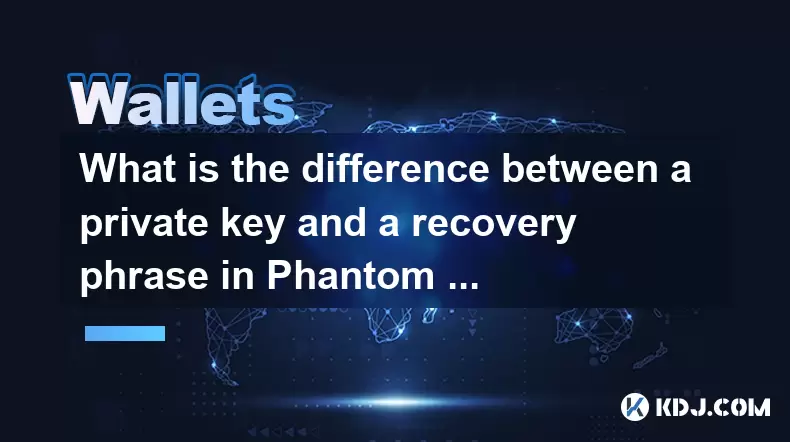
What is the difference between a private key and a recovery phrase in Phantom wallet?
Jul 02,2025 at 09:57am
Understanding the Basics of Phantom WalletPhantom wallet is a non-custodial digital wallet primarily used for interacting with the Solana blockchain. It allows users to store, send, and receive SOL tokens and other digital assets like NFTs. Non-custodial means that the user retains full control over their private keys and recovery phrases. Understanding...
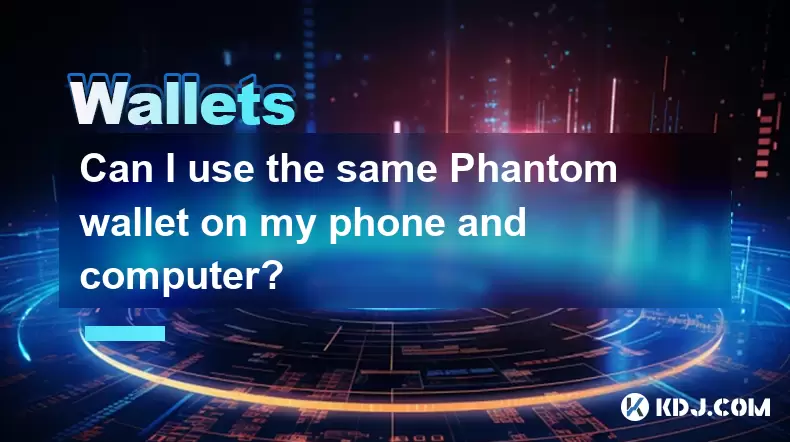
Can I use the same Phantom wallet on my phone and computer?
Jul 02,2025 at 10:04am
Phantom Wallet: Cross-Device CompatibilityPhantom wallet is a non-custodial cryptocurrency wallet designed primarily for interacting with the Solana blockchain. It supports both browser extensions and mobile applications, making it versatile for users who want to manage their digital assets across multiple devices. One of the most common questions among...
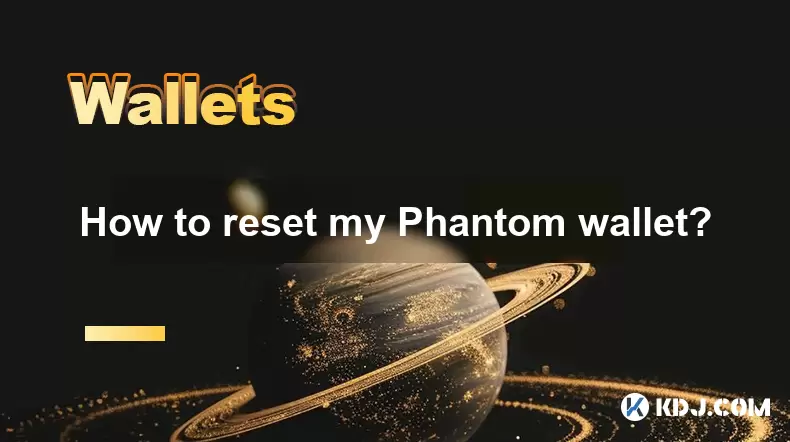
How to reset my Phantom wallet?
Jul 02,2025 at 12:36am
Understanding the Need for Resetting Your Phantom WalletIf you're using a Phantom wallet, you may encounter situations where resetting your wallet becomes necessary. This could be due to forgotten passwords, seed phrase issues, or account corruption. Phantom is a non-custodial wallet primarily used for interacting with the Solana blockchain, and it stor...
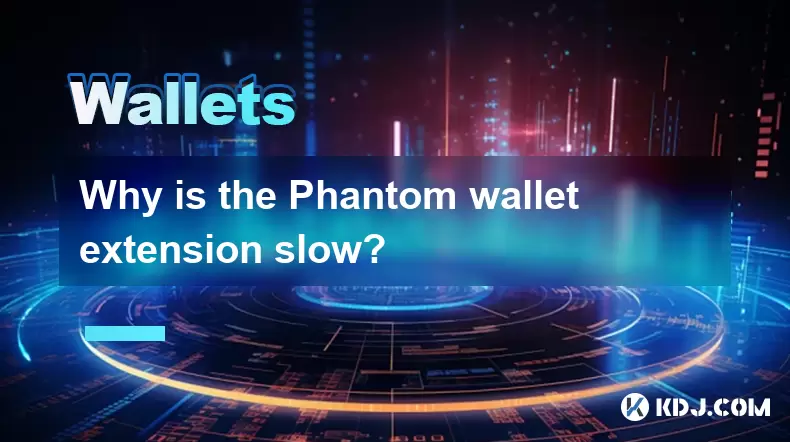
Why is the Phantom wallet extension slow?
Jul 02,2025 at 04:15am
Phantom Wallet Extension: Why Is It Slow?Phantom wallet is a widely used browser extension for interacting with decentralized applications (dApps) on the Solana blockchain. Despite its popularity, some users report that the Phantom wallet extension runs slowly at times. This article delves into potential reasons behind this performance issue and provide...
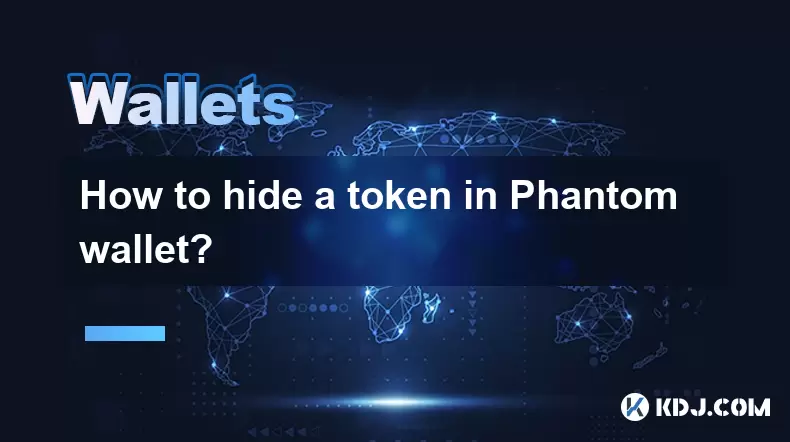
How to hide a token in Phantom wallet?
Jul 01,2025 at 05:49pm
Understanding the Phantom Wallet InterfacePhantom wallet is a popular non-custodial wallet used primarily for interacting with the Solana blockchain. It allows users to store, send, receive, and manage various tokens, including both fungible and non-fungible tokens (NFTs). Before attempting to hide a token, it's essential to understand how the wallet in...
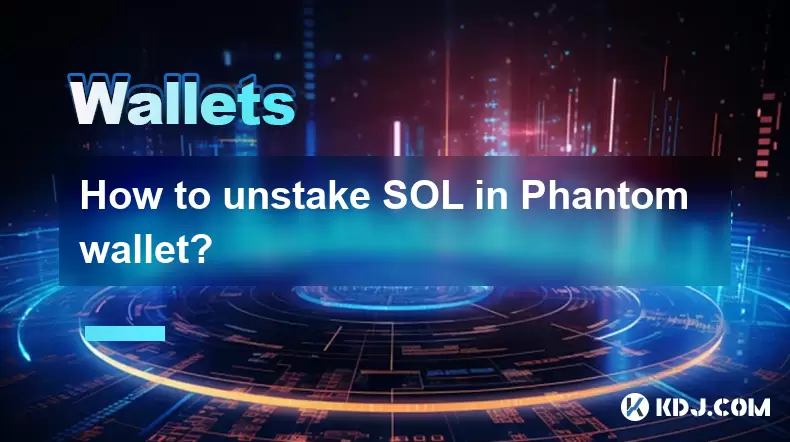
How to unstake SOL in Phantom wallet?
Jul 02,2025 at 06:49am
What Is Staking SOL in Phantom Wallet?Staking SOL involves locking up your SOL tokens to support the Solana network and earn rewards. The Phantom wallet, a popular non-custodial wallet for Solana, allows users to stake their SOL directly from the interface. When you stake SOL, it becomes temporarily unavailable as it is delegated to a validator. This pr...

What is the difference between a private key and a recovery phrase in Phantom wallet?
Jul 02,2025 at 09:57am
Understanding the Basics of Phantom WalletPhantom wallet is a non-custodial digital wallet primarily used for interacting with the Solana blockchain. It allows users to store, send, and receive SOL tokens and other digital assets like NFTs. Non-custodial means that the user retains full control over their private keys and recovery phrases. Understanding...

Can I use the same Phantom wallet on my phone and computer?
Jul 02,2025 at 10:04am
Phantom Wallet: Cross-Device CompatibilityPhantom wallet is a non-custodial cryptocurrency wallet designed primarily for interacting with the Solana blockchain. It supports both browser extensions and mobile applications, making it versatile for users who want to manage their digital assets across multiple devices. One of the most common questions among...

How to reset my Phantom wallet?
Jul 02,2025 at 12:36am
Understanding the Need for Resetting Your Phantom WalletIf you're using a Phantom wallet, you may encounter situations where resetting your wallet becomes necessary. This could be due to forgotten passwords, seed phrase issues, or account corruption. Phantom is a non-custodial wallet primarily used for interacting with the Solana blockchain, and it stor...

Why is the Phantom wallet extension slow?
Jul 02,2025 at 04:15am
Phantom Wallet Extension: Why Is It Slow?Phantom wallet is a widely used browser extension for interacting with decentralized applications (dApps) on the Solana blockchain. Despite its popularity, some users report that the Phantom wallet extension runs slowly at times. This article delves into potential reasons behind this performance issue and provide...

How to hide a token in Phantom wallet?
Jul 01,2025 at 05:49pm
Understanding the Phantom Wallet InterfacePhantom wallet is a popular non-custodial wallet used primarily for interacting with the Solana blockchain. It allows users to store, send, receive, and manage various tokens, including both fungible and non-fungible tokens (NFTs). Before attempting to hide a token, it's essential to understand how the wallet in...

How to unstake SOL in Phantom wallet?
Jul 02,2025 at 06:49am
What Is Staking SOL in Phantom Wallet?Staking SOL involves locking up your SOL tokens to support the Solana network and earn rewards. The Phantom wallet, a popular non-custodial wallet for Solana, allows users to stake their SOL directly from the interface. When you stake SOL, it becomes temporarily unavailable as it is delegated to a validator. This pr...
See all articles

























































































